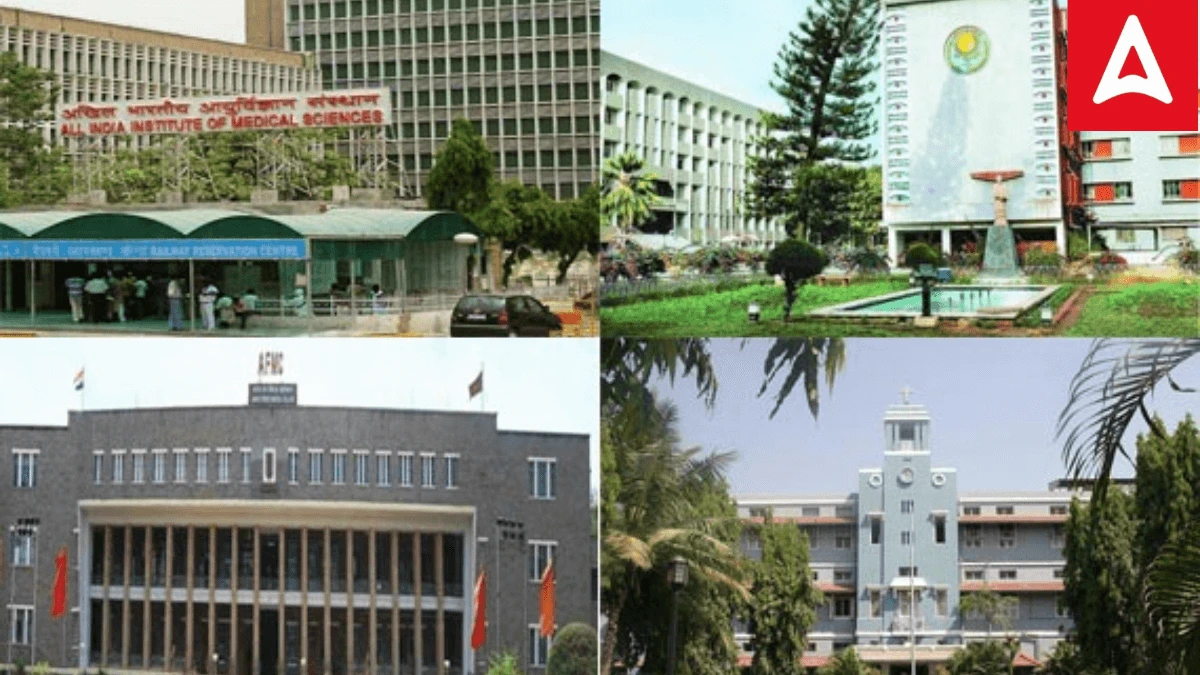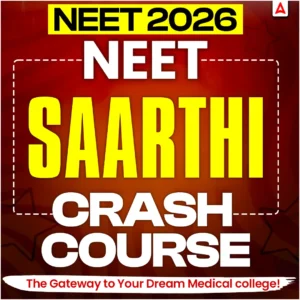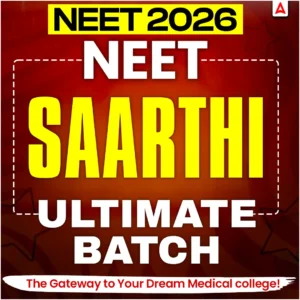Choosing the right medical college during NEET counselling is a pivotal decision that shapes your future as a medical professional. With over 700 medical colleges in India offering MBBS and other medical courses, navigating the NEET UG 2025 counselling process can be overwhelming. This guide provides actionable insights, backed by data, to help NEET aspirants make informed choices during counselling. By focusing on key factors such as college reputation, infrastructure, fees, and clinical exposure, you can select a medical college that aligns with your career goals.
Understanding NEET Counselling 2025
The NEET UG 2025 counselling process, conducted by the Medical Counselling Committee (MCC) for 15% All India Quota (AIQ) seats and by state authorities for 85% state quota seats, is a multi-step procedure. It involves registration, choice filling, seat allotment, document verification, and reporting to the allotted college. Only candidates who meet the minimum NEET cut-off percentile are eligible to participate. Below is a table summarizing the NEET UG 2025 cut-off percentiles by category:
|
Category |
Minimum Percentile |
Expected Cut-off Marks (2025) |
|---|---|---|
|
General/Unreserved |
50th Percentile |
720–137 |
|
OBC/SC/ST |
40th Percentile |
136–107 |
|
General-PwD |
45th Percentile |
136–121 |
|
OBC/SC/ST-PwD |
40th Percentile |
120–107 |
With over 24 lakh students registering for NEET 2024 nationwide and only 4.4% securing MBBS seats, competition is intense. Strategic choice filling during counselling is crucial to maximize your chances of admission to a top medical college.
Key Factors to Consider When Choosing a Medical College
When selecting a medical college during NEET counselling, consider the following factors to ensure the institution aligns with your academic and professional aspirations:
1. College Reputation and Accreditation
-
Why It Matters: A college’s reputation reflects its academic standards, faculty expertise, and alumni success. Accreditation by the National Medical Commission (NMC) ensures the institution meets rigorous quality standards.
-
What to Check: Look for colleges ranked in the National Institutional Ranking Framework (NIRF) or those with a history of producing top medical professionals. For example, AIIMS Delhi is consistently ranked as India’s top medical college due to its academic excellence and infrastructure.
2. Clinical Exposure
-
Why It Matters: Hands-on clinical experience is critical for developing practical medical skills. Colleges with attached hospitals offering diverse medical cases provide better training.
-
What to Check: Evaluate the hospital’s patient load, outpatient and inpatient departments, and availability of super-specialty services. For instance, government colleges like Maulana Azad Medical College (MAMC), Delhi, are known for high clinical exposure due to their large associated hospitals.
3. Infrastructure and Facilities
-
Why It Matters: Modern classrooms, well-equipped laboratories, libraries, and hostels enhance the learning experience.
-
What to Check: Research the college’s infrastructure, including simulation labs, research facilities, and hostel accommodations. Private colleges often have superior infrastructure but higher fees.
4. Tuition Fees and Financial Considerations
-
Why It Matters: Tuition fees vary significantly between government and private colleges. Government colleges are subsidized, making them more affordable, while private colleges may charge up to ₹1 crore for the MBBS course.
-
What to Check: Compare fee structures and check for scholarships or education loans. For example, Uttar Pradesh government colleges charge approximately ₹10,000–₹50,000 annually, while private colleges may charge ₹10–20 lakh per year.
5. Location and Accessibility
-
Why It Matters: The college’s location affects accessibility, safety, and lifestyle. Urban colleges offer better connectivity and amenities, while rural colleges may provide a quieter environment but limited access.
-
What to Check: Consider proximity to transportation hubs and the availability of safe accommodation. For example, colleges in metro cities like Delhi or Bangalore are preferred for their accessibility.
6. Service Bonds and Stipends
-
Why It Matters: Some colleges, especially government institutions, impose service bonds requiring graduates to serve in rural areas for 1–2 years. Bonds may also include high penalties for non-compliance.
-
What to Check: Prefer colleges with no or minimal service bonds, such as AIIMS, JIPMER, or Delhi-based colleges like MAMC. For postgraduate aspirants, check the availability of internal NEET PG quotas.
7. Admission Cut-offs
-
Why It Matters: Cut-off ranks indicate a college’s competitiveness and academic quality. Top colleges attract higher NEET ranks, reflecting better infrastructure and faculty.
-
What to Check: Use tools like the NEET College Predictor to compare your All India Rank (AIR) with previous years’ cut-offs. For example, the closing rank for MBBS at BHU Varanasi (General category) in 2024 was around AIR 2,000.
8. Postgraduate Opportunities
-
Why It Matters: Colleges with strong postgraduate (PG) programs offer better preparation for NEET PG and access to super-specialty courses.
-
What to Check: Research the availability of PG seats and the college’s NEET PG success rate. Institutions like AIIMS and JIPMER are preferred for their internal PG quotas.
Data Points: Top Medical Colleges and Their Cut-off Ranks (NEET 2024)
The following table lists some top medical colleges in India, their NIRF 2024 rankings, and approximate NEET 2024 closing ranks for the General category under the 15% AIQ:
|
College Name |
NIRF 2024 Rank |
NEET 2024 Closing Rank (AIR) |
Type |
Annual Fees (₹) |
|---|---|---|---|---|
|
AIIMS, New Delhi |
1 | ~100 |
Government |
~10,000 |
|
Maulana Azad Medical College, Delhi |
5 | ~1,500 |
Government |
~15,000 |
|
JIPMER, Puducherry |
6 | ~1,000 |
Government |
~12,000 |
|
Banaras Hindu University, Varanasi |
8 | ~2,000 |
Government |
~20,000 |
|
Christian Medical College, Vellore |
3 | ~3,500 |
Private |
~50,000–1 lakh |
|
Kasturba Medical College, Manipal |
9 | ~15,000 |
Private |
~15–20 lakh |
Strategic Tips for NEET Counselling Choice Filling
-
Prioritize Top Colleges: Start your choice list with premier institutes like AIIMS, JIPMER, and top government colleges (e.g., MAMC, BHU) if your rank permits. These colleges offer excellent education and no service bonds.
-
Include State Quota Colleges: State quota seats (85% of government college seats) have lower cut-offs than AIQ seats, especially for reserved categories (OBC/SC/ST/EWS). For example, reserved category candidates with AIR up to 1.5–2 lakh can secure MBBS seats in states like Uttar Pradesh or Bihar.
-
Avoid Undesirable Colleges: Do not include colleges with high fees, long service bonds, or poor infrastructure in your choice list to avoid unwanted allotments.
-
Use NEET College Predictor Tools: Tools like those offered by CollegeDekho or NEET Navigator use past cut-off data to predict colleges based on your AIR, category, and preferences.
-
Lock Choices Wisely: Wait until the last day of choice locking to finalize your list, as this allows you to review the seat matrix and make informed decisions. Choices are auto-locked if not manually locked.
-
Prepare for Multiple Rounds: NEET counselling includes three rounds plus a stray vacancy round. Fill fresh choices for each round to maximize your chances.
Step-by-Step Guide to NEET Counselling 2025
-
Register: Register on the MCC portal (mcc.nic.in) for AIQ counselling or respective state portals (e.g., cetonline.karnataka.gov.in for Karnataka) for state quota seats.
-
Choice Filling: List colleges in order of preference based on your rank, budget, and priorities. Add as many choices as possible to increase your chances.
-
Seat Allotment: Check the provisional and final seat allotment results on the MCC or state portal. Submit grievances if needed.
-
Document Verification: Submit required documents (e.g., NEET admit card, scorecard, Class 10/12 marksheets, medical fitness certificate) in PDF format.
-
Report to Allotted College: Report to the allotted college within the stipulated time to secure your seat. Failure to report may result in forfeiture of the security deposit.
Documents Required for NEET Counselling 2025
Ensure you have the following documents ready in PDF format (up to 300 KB each) for smooth counselling:
|
Document |
Purpose |
|---|---|
|
NEET 2025 Admit Card |
Proof of exam participation |
|
NEET 2025 Scorecard |
Proof of rank and score |
|
Class 10 & 12 Marksheets |
Academic verification |
|
Date of Birth Certificate |
Age verification |
|
Government ID (e.g., Aadhar Card) |
Identity verification |
|
Medical Fitness Certificate |
Health eligibility confirmation |
|
Category Certificate (if applicable) |
Reservation eligibility |
|
EWS Certificate (if applicable) |
Economic Weaker Section eligibility |
|
Passport-size Photographs |
For records |
Source: CollegeDekho, 2025
Common Mistakes to Avoid During NEET Counselling
-
Limited Choice Filling: Not adding enough colleges or excluding state quota options reduces your chances of securing a seat.
-
Ignoring Cut-off Trends: Failing to compare your AIR with previous years’ cut-offs can lead to unrealistic choices.
-
Early Choice Locking: Locking choices too early prevents adjustments based on updated seat matrices.
-
Overlooking Bond Rules: Choosing colleges with stringent service bonds without understanding their implications can limit future opportunities.
-
Incomplete Documents: Missing or incorrect documents can disqualify you from the counselling process.










 NEET Preparation Strategy 2026: Detailed...
NEET Preparation Strategy 2026: Detailed...
 Free NEET Sample Papers 2026 PDF | Downl...
Free NEET Sample Papers 2026 PDF | Downl...
 Salt Analysis NEET Notes, Check Importan...
Salt Analysis NEET Notes, Check Importan...









